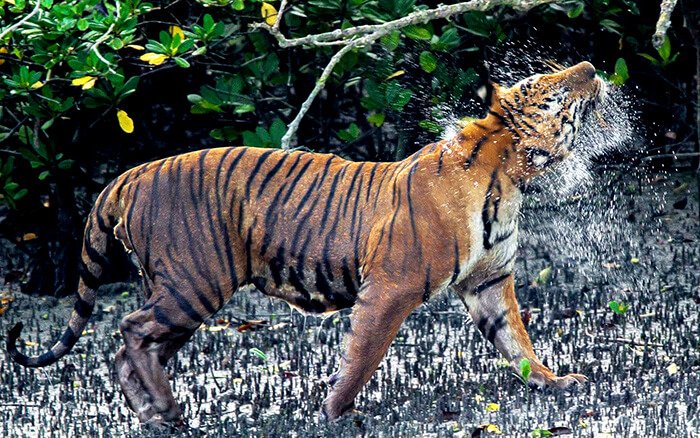
Bengal Tiger
The Bengal tiger (Panthera tigris tigris), which has been present in the Indian subcontinent for around 16,000 years, is now threatened by poaching and habitat fragmentation. India and Nepal are two of the most promising places for tracking and photographing wild tigers. Adult males weighing 260kg are not unusual, making it one of the largest wild cats alive today. These are solitary ambush hunters, as opposed to lions. Individual territories are maintained by both sexes depending on the presence of the other sex, prey, water, shelter, and so on. Males typically have bigger home ranges than females. Aside from herbivores, they have been observed killing predators such as leopards, mugger crocodiles, Asian black bears, sloth bears, and Indian wild dogs. At times, a few uncommon attacks on adult Indian elephants and Indian rhinoceroses were recorded, particularly in Assam’s Kaziranga National Park. Project Tiger, which was begun in 1973 with the goal of ensuring a robust tiger population in the country, is widely regarded as a success today.
What we offer
We currently organize tours to only one tiger destination in India, where the entire population of Bengal Tiger is notorious as man-eaters, referring to humans as their natural prey species. This iconic population of swamp tigers live in Sunderban, near the West Bengal state of India. Tiger safaris here are conducted by boat, something similar to the Jaguar safaris in Brazil’s Pantanal.
This is quite challenging, you need a lot of luck, and we love to work in challenging wildlife habitats as you can understand seeing our destinations and target species lists.

Man-eating Bengal Tigers
For millennia, healthy Bengal Tigers have hunted humans in this area; possibly no other predator of any kind hunts humans as ferociously. And the underlying cause is yet unknown. Some studies blame the saltiness of the water, others the prevalence of harmless humans (fishermen and honey-collectors) in the tiger’s natural habitat, while still others attribute the tiger’s fondness for human flesh to the difficulties in getting its typical food in its hostile terrain.
